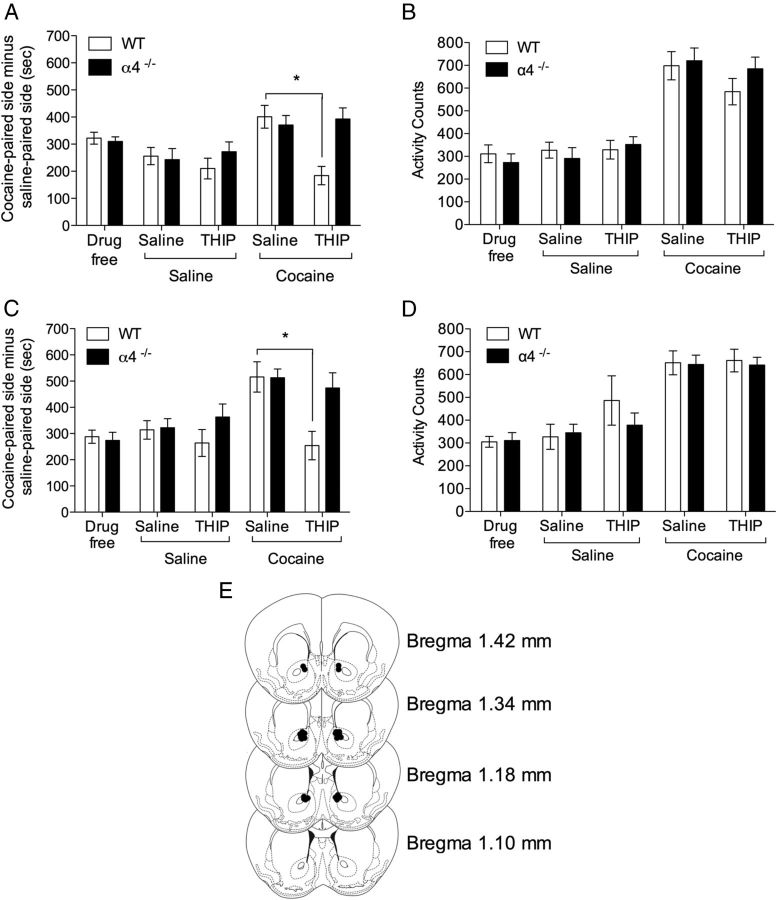Figure 8.
Conditioned place preference (CPP) and locomotor activity in α4 constitutive knock-out mice. A, Cocaine induced a significant CPP in both WT (n = 11) and constitutive α4−/− (n = 11) mice under drug-free and saline (saline/saline) conditions. Systemic THIP had no effect on preference in either genotype (THIP/saline). A challenge dose of cocaine increased preference in both genotypes (saline/cocaine) and THIP blocked the cocaine enhancement in WT, but not α4−/− mice (THIP/cocaine). B, WT and α4−/− mice did not significantly differ in locomotor activity during CPP testing and activity was potentiated by a cocaine challenge in both genotypes. Systemic THIP (8 mg/kg) did not alter activity during testing in either genotype. C, As in A, cocaine induced a significant CPP in both WT (n = 8) and constitutive α4−/− (n = 8) mice under drug-free and saline conditions. Intra-accumbal THIP had no effect on preference in either genotype. Again, a challenge dose of cocaine enhanced preference in both genotypes. This effect was blocked by intra-accumbal THIP in WT, but not in α4−/− mice. D, As in B, WT and α4−/− mice did not significantly differ in locomotor activity during CPP testing and were both equally potentiated by a cocaine challenge. Intra-accumbal infusion of 3 mm THIP did not alter activity during testing in either genotype. E, Cannulae placements for intra-accumbal infusion in C and D. *p < 0.05, post hoc comparisons.

